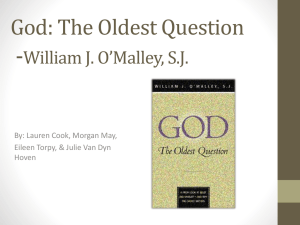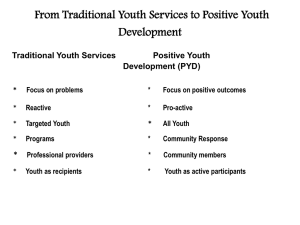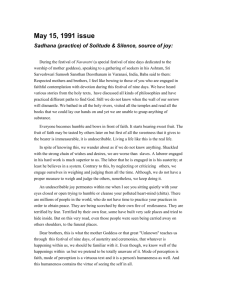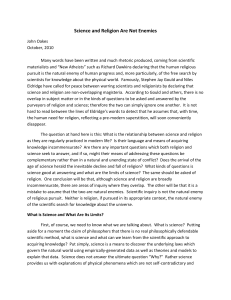Philosophy 224
advertisement
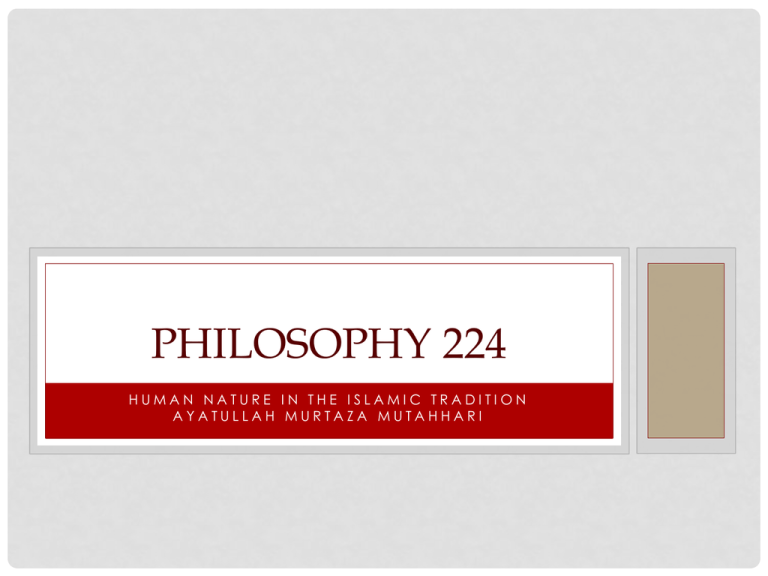
PHILOSOPHY 224 HUMAN NATURE IN THE ISLAMIC TRADITION AYATULLAH MURTAZA MUTAHHARI HUMANS AND ANIMALS • Mutahhari begins by noting the continuity of humans with animals and characterizing the basic difference them: the presence in humans of “insights and beliefs” (70). For Mutahhari, this difference both distinguishes and elevates humans. • Animals have a limited form of consciousness, but human consciousness is qualitatively distinct, both in terms of the depth of its understanding and in terms of the height of its aspirations. • Animal awareness is limited to the senses and is thus external. It is essentially individual, localized and immediate. Human awareness is oriented by both the external and internal features of experience. It is capable of achieving universal insight and is free to roam across time and space. • Animal desire is limited to the material. Human desire encompasses immaterial features of existence (ex. morality, devotion to ideals). It is general and inclusive, potentially universal in scope. SCIENCE AND FAITH • The cultural expression of these distinctive features of human consciousness are identified by Mutahhari as Science and Faith. • Science: “the sum total of human contemplations on the universe,” characterized by, “a special system of logic” (72). • Faith: the “elevated, ideal, supra-animal aptitudes” of human beings in an “ideational and credal infrastructure” (Ibid.). • Corresponding to these two systematic accomplishments are two distinctively human capacities: insight and belief. • When we recognize the distinctiveness of human beings in their production of these two cultural products, we can in turn define human beings by them, “…man is the animal distinguished from the other animals by the two features, ‘science’ and ‘faith’” (73). FROM ANIMAL TO HUMAN • This account of the distinctiveness of human beings highlights a proximity with the Christian account we’ve seen. For Islam as well, human beings are a spiritual double with both an animal and a properly human nature. • This doubling produces two forms of human life: the material (animal) life and the cultural (human) life (73). • The question becomes, “What is the nature of the relationship between the animal and human in us? • Mutaharri reviews a range of social scientific answers, which all tend toward the conclusion that it is our ‘animal’ natures which are fundamental. • Mutaharri’s opposes this view with a developmental one which focuses on our ‘human’ nature as a telos (end of goal(74, ¶3). A DIFFERENCE WITH A DIFFERENCE • The reinterpretation of the distinction between humans and animals allows a better understanding of the distinction between science and faith. • In contrast to the tradition of the west, for which the fall of humans is commonly equated with reason (think about the account in Genesis), the Islamic understanding of the Fall does not oppose reason to faith. • On Mutaharri's view, the are correlative (78, ¶3). • Both are necessary, not only to us as humans, but to each other. DIAGNOSIS AND PRESCRIPTION • On Mutaharri’s account, the source of the problem for us is the temptation/tendency to live a life consumed by the animal aspect of our natures. • It is a life without faith, either one in which “science” is dominant and thus without the capacities for belief that are co-constitutive of our full humanity, or one in which there is little or no human consciousness at all. • We need science and faith, because faith alone can penetrate beyond the material and it is part of our nature to have faith (80, 82). • That the ‘cure’ is faith is another significant overlap between the Christian and Islamic theories of human nature.




